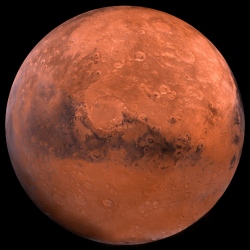
To prepare the Curiosity rover for Mars, NASA scrubbed it with alcohol and baked it. This is part of the protocol for “planetary protection,” a policy devised in the 1950s to keep earthly microbes from contaminating other worlds. But when scientists swabbed Curiosity, they found 56,400 organisms from 377 bacterial strains.
Then, in the lab, researchers tried to take them out by other means: ultraviolet blasts, high pH environments, and dehydration. Still, the majority survived at least one trial unscathed.
“Whatever we throw at them, they find a way around it,” says University of Idaho microbiologist Stephanie Smith. Unless scientists can identify the Achilles’ heels of these bugs, missions will keep sending them into space. Here are four ways that could come back to bite us.
Contagions: During a long stint in a space colony, astronauts’ immune systems will likely weaken. If a microbe like E. coli, previously found clinging to “clean” spacecraft, contaminates the water or food supply, it could devastate the crew.
Invasions: Places with liquid water, such as Europa, might make good bacterial breeding grounds. A hardy species like Geobacillus stearothermophilus, prevalent in Earth’s ocean sediments and soil, could overrun an entire biosphere once it gets a hold.
Mysteries: The organisms that survive NASA’s protocols tend to be enigmatic. There are some species, like Tersicoccus phoenicis, that we didn’t even know existed; scientists have found it only in the clean rooms where spacecraft are assembled.
Confusion: If we leave Earth bugs in our wake, any life that planetary scientists may someday detect could simply have fallen off a lander. And without a better understanding of the species we bring to space, we might not recognize it as terrestrial.
